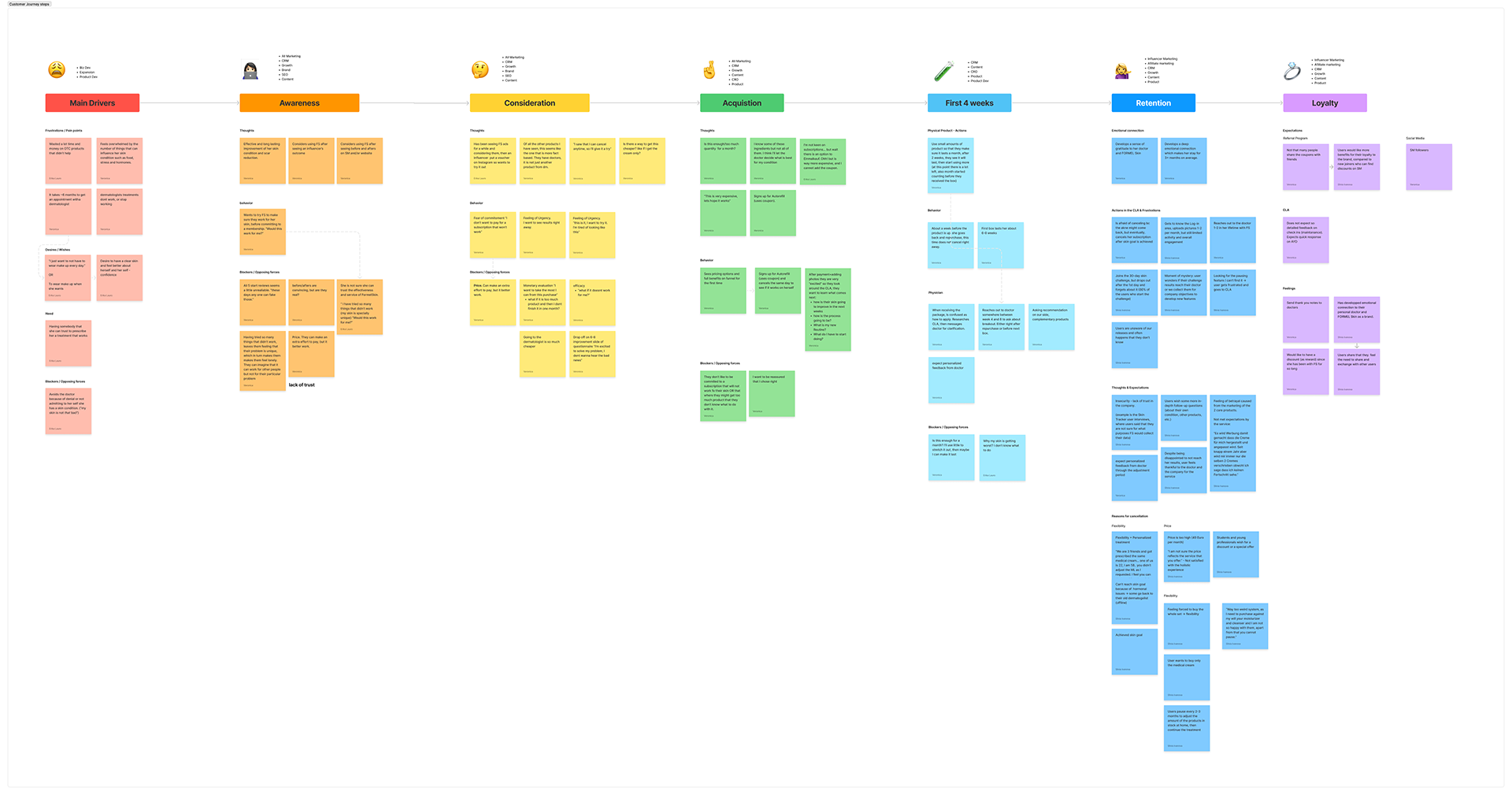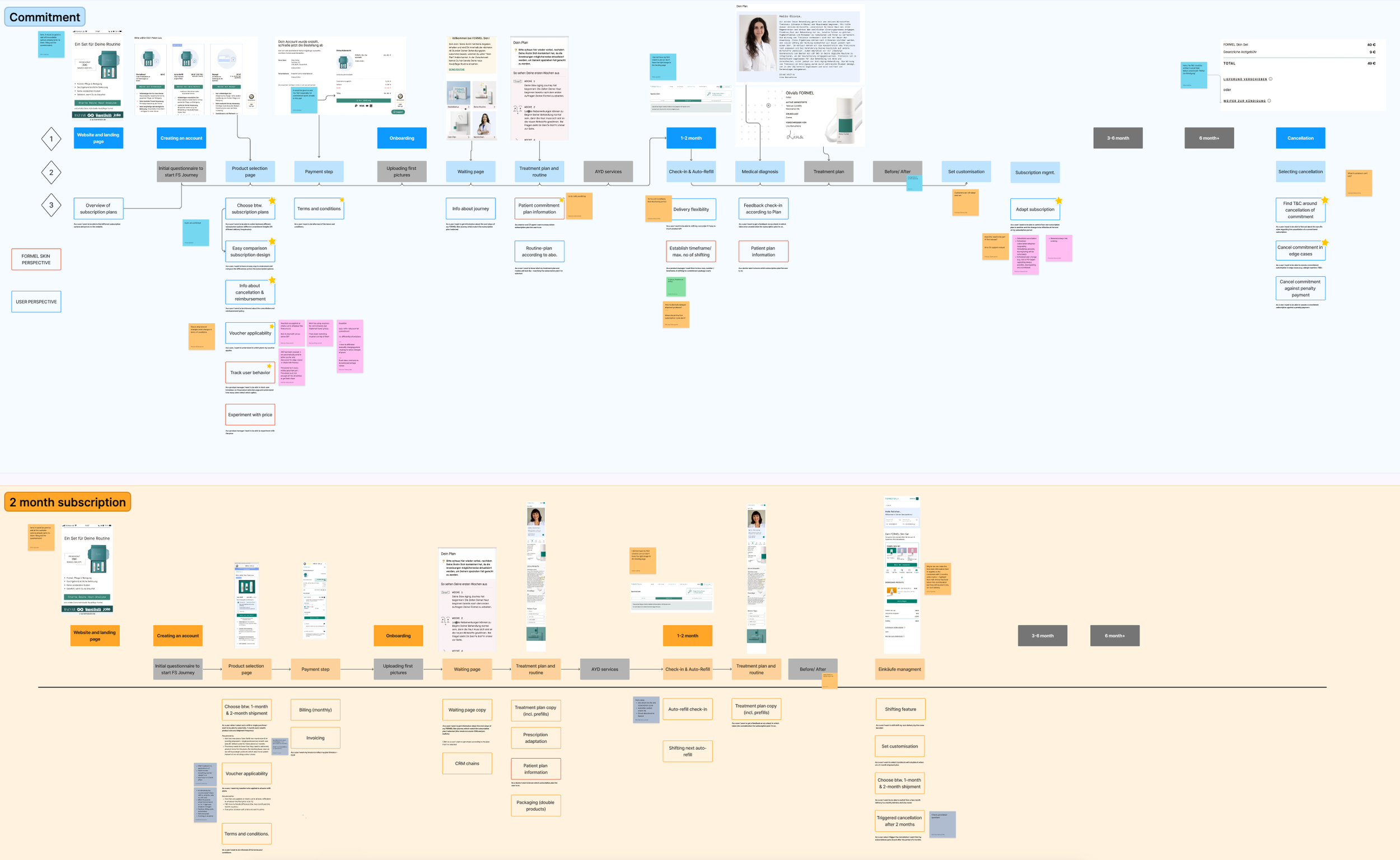
Subscription Conversion Funnel, & Onboarding Overhaul
FORMEL Skin provides remote dermatological treatment through a monthly fee. Dermatological treatments take time
to show results, and users want to first ‘test’ for a month to
see if it works.
With new subscription plans, we were trying to commit users to the plan for a longer time, so that they can see results before having to think about their next purchase.
My role was Product Designer, focused on acquisition and onboarding new users.
The Challenge
Through research, we have found that FORMEL Skin users want to test the treatment for minimal cost and time before they commit to the subscription service. The issue is, that at the one-month time stamp, there is a ‘break in’ skin treatment phase in which most users will experience irritation, exactly at the time when they would need to buy the second month of treatment to experience improvement.
We have been testing several solutions to this problem: i.e. more information on the break-in phase on onboarding, discounts on the first two months, and influencer marketing among others. This project is trying to address the problem via different price schemes that can facilitate the conversion and retention of the user.
The FORMEL Skin User Journey
In May 2022, Silvia Ivanova (the other designer on the product team) and I worked on an end-to-end user journey, so that we could understand the whole journey from both of our ends. (She had been working on retention and I on funnel and onboarding).
We then brainstormed ideas and shared them across the company with all different and relevant departments, hoping to spark new initiatives that could improve the lives of our customers and thus convention and retention.

“I don’t want to pay for a subscription that won’t work (for me)”
— User
-
Pain Points
Fear of commitment
Price. Can make an extra effort to pay, but it better work.
-
Opportunities
An initial low-cost version that hooks users for the 6-8 weeks it takes to start seeing results
Research
The Growth team took the idea and interviewed customers, then researched into logistical, legal, and monetary feasibility and impact of different subscription plans: 2 month plan and a commitment plan.

Competitive Analysis
After reading and understanding the background and many meetings, we started the design process. I researched competitors and other services that could help us ideate on what standards of presenting this content are. And also what not to do.

(Side note) Previous Optimization of the Plan Selection step of the funnel
As part of my work with the Conversion Rate Optimization (CRO) team, I have participated in the ideation, hypothesis creation, and design of experiments for the plan selection step that is involved in this project. Some of the changes that have been successful experiments are:
1. Moving coupon input to the cart
2. Highlight Money Back Guarantee
3. Bigger Box image
4. Overall redesign to remove clutter
5. Copy that speaks to the language patients use

Initial Prototypes & User Testing
After several initial sketches, I roughed wireframes that naïve users recruited via www.userinterviews.com could read and test on real phones to get more real-life feedback.
Test 1
On the first test, we wanted to break the decision-making into bite-sized moments to not overwhelm the user with a lot of information plus have to make a decision. Therefore, I divided the screens by what> how> how much.
Another important goal was to give information that would convince the user that a longer commitment leads to better results.
Test goals
Is the 3-step approach helping communication or making it more difficult?
Do users understand what each option of the plan covers?
What is difficult to understand?
What do they expect to get and when?
What plan would be more interesting to them? Why?
Is the UX flow clear to them? Are there pain points?
This kind of ongoing loop only works when users feel comfortable and the system behind it stays lean. By combining human rapport with operational thinking, I made research a sustainable habit at NAVIT—not a one-off initiative.
